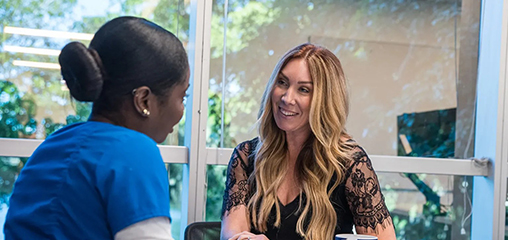Needle Positioning: The Key to a Successful Blood Draw
Those training to enter the field of Phlebotomy should know that one of the keys to a successful blood draw is needle positioning – an improper needle position is one of the most common causes of blood draw failure. Once trained, a Phlebotomist can use several simple visual cues to determine if the needle is positioned correctly in the vein.
The angle of the needle can greatly affect the success of a blood draw. If the bevel of the needle is resting against the lower or upper wall of the vein, blood flow can be affected – this problem can easily be fixed by changing the needle angle. If the needle angle is too shallow, this can cause the needle to come in contact with the upper wall, resulting in an angle that is too steep, which can cause the needle to come in contact with the lower wall. To avoid this, a skilled Phlebotomist will reestablish blood flow by releasing the vacuum pull on the vein and slightly retracting the needle. Problems can occur when the needle is inserted into a bend in the vein or at a point where the vein goes deeper into the skin – both situations are unfortunately difficult to detect.
Another problem that can occur is the needle being inserted too deeply, causing it to penetrate all the way through the vein. This can occur if the tube holder is less steady than the tube being pushed onto the needle, or if the angle is too steep. If the needle position isn’t quickly corrected, a hematoma can form – this can often be corrected by slightly withdrawing the needle to reestablish blood flow. While the needle being inserted too deeply can pose a problem, another common challenge is if the needle isn’t inserted deep enough. If the needle doesn’t penetrate the wall of the vein, the blood flow will be very slow. In this case, the phlebotomist should gently push the needle into the vein.
If the vein is not well anchored during needle insertion, the needle can slip to the side of the vein instead of into the vein. If this occurs, the vacuum can be preserved and the needle can be redirected into the vein. It is important to note that the needle should never be moved laterally to find a vein. Lastly, if the angle of the needle can’t be determined visually, a Phlebotomist can use their finger to help relocate the vein, repositioning the needle into it.
Interested in becoming a Phlebotomist? Contact Arizona College today to learn more about our Phlebotomy training program and other exciting career paths in the field of allied health.
Information in this blog post is accurate as of September 17, 2013.
Start Your Future in Nursing Today

If you’re considering a career as a registered nurse (RN), Arizona College of Nursing is here to help you pursue your dream. Our BSN program enables you to earn a Bachelor of Science in Nursing in just 3 years or less with qualifying transfer credits. We’ve helped hundreds of students to earn a BSN degree and enter the nursing profession – and we’re ready to support you on your path to becoming an RN.
Why Choose Arizona College of Nursing?
- Earn a BSN degree in 3 years or less with eligible transfer credits
- Campus locations throughout the US
- Night classes for general education courses
- Hybrid Online/In-Person format for general education classes
- Nursing education is all we do
- CCNE-Accredited Program*
- NCLEX-RN success coaches and exam preparation class
- Financial aid available to those who qualify
Discover Your Path to a Career in Nursing
Information in this post is accurate as of September 17, 2013.
*The Bachelor of Science in Nursing (BSN) degree program at Arizona College of Nursing is accredited by the Commission on Collegiate Nursing Education (https://www.aacnnursing.org/). All Arizona College of Nursing and Arizona College campuses are institutionally accredited by the Accrediting Bureau of Health Education Schools (https://www.abhes.org/), a U.S. Department of Education-recognized accrediting agency.








